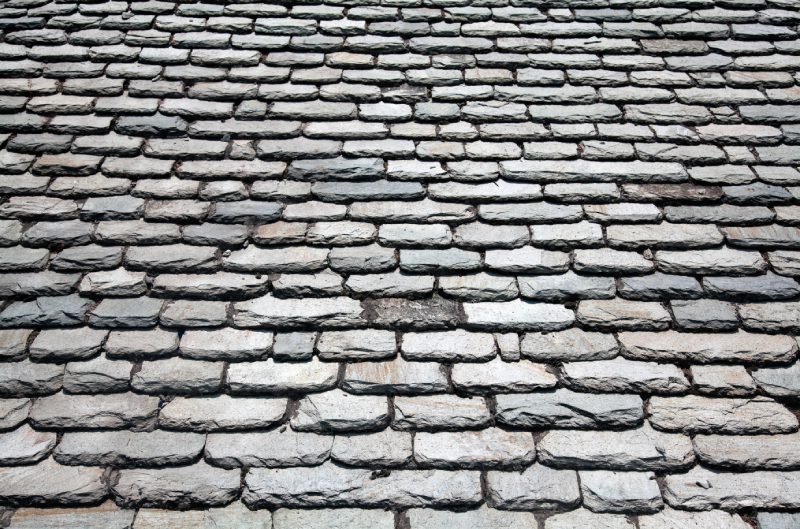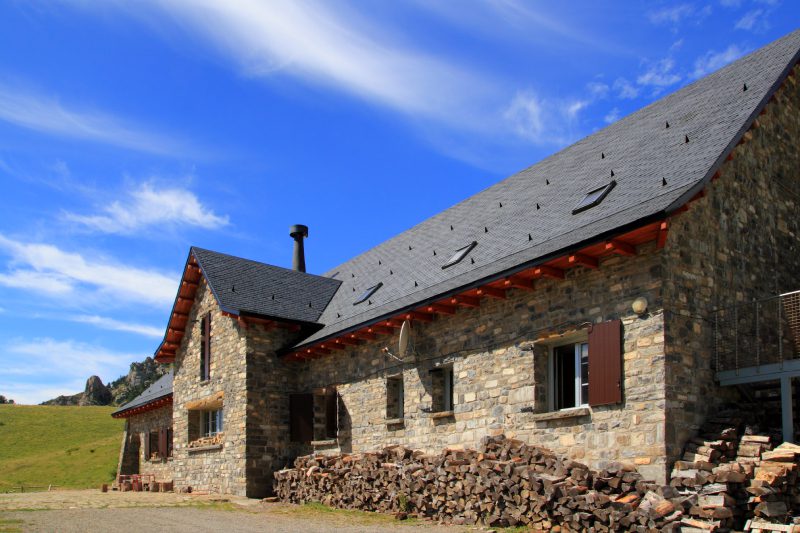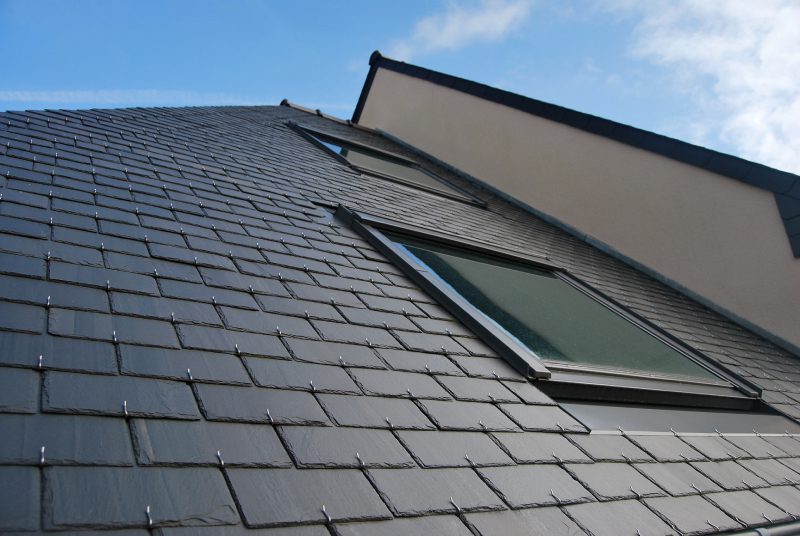What is a Slate Roof?
Slate Roofs are made with tiles cut from a natural metamorphic rock mined from the earth. Slate is predominantly mined in Spain, with Brazil being a distant second. Natural slate will generally outlast your home! It is among the most expensive roofing systems, both for the cost of the material and the intensive skilled labor required.
What is Synthetic Slate?
Depending on the manufacturer, synthetic slate is made of rubber, plastic, and other materials to make a very strong roofing system. Synthetic slate roofing is much lighter and easier to install than natural slate.
Why do homeowners choose Natural Slate or Synthetic Slate?
Generally, when a homeowner selects slate or synthetic slate, it is primarily for the unmistakable aesthetic appeal. Both natural and synthetic slate are very durable as well. If the slate look is a must-have, then deciding between natural and synthetic comes down to cost. Natural slate is very heavy, on the higher end of the price spectrum, and very few roofers are qualified to install it.
Synthetic slate, on the other hand, is light, accessible, more affordable, and more generally supported by roofing contractors. As such, synthetic slate is the more popular option to achieve the look of slate.
Benefits of Synthetic Slate Roofs
- Aesthetic. This is the top reason homeowners choose Slate Roofs. Today’s synthetic slate products offer many options in color and texture.
- Durable. Synthetic slate often comes with a 40 to 50 year warranty, and are UV resistant to protect from fading. They can also sustain winds upwards of 110mph. They also won’t crack like natural stone.
- Energy Efficient. Synthetic slate has a better insulative quality than natural stone.
- Availability. Natural slate has to be mined and shipped to the US. Given it’s weight, this adds to the cost of the material and installation.
- Accessibility. More roofers can install synthetic slate over natural slate.
- Weight. At about 1/4 the weight of natural slate, synthetic slate generally does not require reinforcing structural supports, whereas natural slate does.
- Safety. Synthetic slate is Class A fire rated.
Natural Slate Roofs
If you are set on a natural slate roof, here are some considerations to keep in mind:
- Weight. Be sure your roof structure can support the weight.
- Contractor Qualification. Ensure your contractor specializes in natural slate roof installation. Are they a member of the Slate Roofing Contractors Association?
- Source. Do you know the source of your slate? You should know all the way to the quarry where it was mined to ensure that if you need additional tiles, you can match the originals as closely as possible.
- Warranty. Does your contractor warranty their workmanship?
The desire to have the look of a slate roof will likely never go away. In fact, with the introduction of synthetic slate, the aesthetic appeal of slate roofs is regaining popularity.




